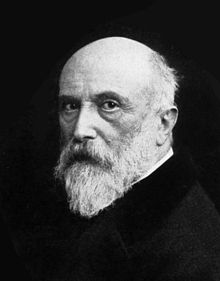|
Oscar Liebreich
Matthias Eugen Oscar Liebreich (14 February 1839 – 2 July 1908) was a German pharmacologist. BiographyHe was a native of Königsberg. He studied chemistry under Carl Remigius Fresenius (1818–1897) in Wiesbaden, and studied medicine in Königsberg, Tübingen and Berlin, obtaining his degree in 1865. Beginning in 1867, he worked as an assistant in the chemistry department of the pathological institute under Rudolf Virchow. Later on, he became a professor of therapeutics (1868) and director of the pharmacology institute in Berlin (1872). In 1889 he was co-founder of the Balneologischen Gesellschaft (Balneology Society) in Berlin, and was its chairman until his death in 1908. ContributionsLiebreich introduced the method of phaneroscopic illumination for the study of lupus; showed the value of cantharidin in tuberculosis, of mercuric formamide and of lanolin in syphilis, of butylchloral hydrate and of ethylene chloride[note 1] as anesthetics. In 1865, he gave the name "protagon" to a proximate principle discovered in the brain and in blood corpuscles. He is well known for his investigations pertaining to the sedative and hypnotic properties of chloral hydrate (1869), and was an important factor in the drugs' popularity during the latter half of the 19th century. He also made valued contributions in his chemical research of boracic acid. Liebreich edited the Therapeutische Monatshefte (1887 sqq.) and the Encyklopädie der Therapie (1895 sqq.), and with Alexander Langgard, published a Kompendium der Arzneiverordnung (5th ed. 1902). Works
FamilyHe was a younger brother of ophthalmologist Richard Liebreich (1830–1917). Notes
References
External links
|
||||||||||||||||||
Portal di Ensiklopedia Dunia
